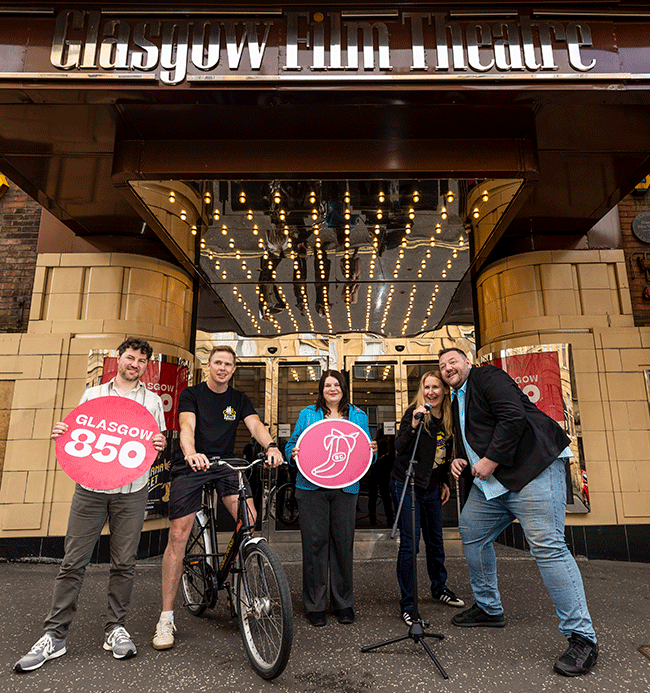Glasgow and Russia: Hidden Histories from the Clyde to the Kremlin
- mgfheaney
- May 21
- 4 min read
Updated: Jun 9
At Gallus Pedals, we love putting together itineraries for niche topics. Recently, we had the pleasure of hosting some guests from Sodis Travel Company on one of our walking tours. Our interest in local politics and history led us to take a deep dive into the lesser-known connections between Glasgow and Russia — and what we found was eye-opening.
With some guidance from Alex Marshall, Senior Lecturer at the University of Glasgow (specialising in the Soviet Union and Russian Empire), we uncovered a tangle of revolutionary roots, poetic admiration, covert operations, and several diplomatic ties. Here’s a few of the nuggets we discovered -= each one meriting further research.

The People’s Poet: Robert Burns in Russia
It might surprise you to learn that Robert Burns, whose statue stands proudly in George Square, is beloved not just in Scotland but across Russia. During the 19th and 20th centuries, Burns’ egalitarian ideals and celebration of working-class life struck a major chord with Russian readers.
In the Soviet era, his works were required reading in schools, and he was dubbed the “people’s poet” — a symbol of international solidarity and shared struggle. Here's a link to a group of Russian school pupils visiting University of Glasgow.
Red Clydeside and the Day the Red Flag Flew in George Square
In January 1919, George Square became the epicentre of one of Glasgow’s most dramatic political moments: the Battle of George Square. Workers demanding a 40-hour workweek clashed with police, and the red flag of socialism was raised above the crowd — shocking Westminster and prompting the deployment of British troops and tanks to Glasgow (source).
Vladimir Lenin reportedly referred to Glasgow as "the Petrograd of the West", believing that if a Communist revolution ever occurred in the West, Glasgow would lead it.
John Maclean: The Most Dangerous Man in Britain

No story of Glasgow’s radical links to Russia is complete without John Maclean. A schoolteacher turned revolutionary, he was appointed Soviet Consul for Scotland by Lenin in 1918 and was celebrated in the USSR for his dedication to socialist ideals.
So profound was his legacy that the Soviet Union issued a commemorative postage stamp in his honour in 1979. Want to know more? We wrote about his remarkable life in a previous blog:👉 Glasgow, Russia and the Most Dangerous Man in Britain
Mikhail Borodin: From Glasgow Jail to the Chinese Revolution
In 1922, Mikhail Borodin, a top Comintern agent, was arrested in Glasgow under the alias George Brown. Sentenced to six months in Barlinnie Prison, he was deported to the USSR after allegedly attempting to help reorganise the Communist Party of Great Britain.
But his story didn’t end there. Borodin went on to become a key advisor in China, where he helped form the First United Front between the Kuomintang and the Chinese Communist Party and played a pivotal role in the 1925 revolution against British influence in Shanghai (source)
Mikhail Suslov: Soviet Ideologue Sails the Clyde
Fast-forward to 1947, when another high-profile Soviet official visited Scotland: Mikhail Suslov, head of Soviet ideology. As part of a Supreme Soviet delegation, Suslov toured the UK, meeting with both Prime Minister Clement Attlee and Winston Churchill.
Before heading home, the delegation travelled north to Edinburgh and Glasgow, where Suslov noted taking a boat trip down the River Clyde in a cutter—a surprisingly peaceful end to a politically symbolic visit (source).
Willie Gallacher: Scotland’s Last Communist MP

If John Maclean was the movement’s firestarter, Willie Gallacher was its flame-keeper. Born in Paisley and active in the Red Clydeside strikes, Gallacher was elected Communist MP for West Fife in 1935 — the first and last of his kind in British history.
He served until 1950, championing workers’ rights and international socialism throughout his tenure. Though often overlooked today, his influence still echoes in Glasgow’s political legacy.📰 Read more from The National:👉 Remembering Willie Gallacher
La Pasionaria: Glasgow’s Anti-Fascist Sentinel

While not Russian, the towering statue of Dolores Ibárruri (La Pasionaria) stands as a proud symbol of Glasgow’s broader internationalist values. Unveiled in 1979 beside the Clyde, it honours the Glaswegians who joined the International Brigades to fight fascism in the Spanish Civil War.
Her famous words, "Better to die on your feet than live forever on your knees," are inscribed at its base.📖 Learn more in the Glasgow Times’ history spotlight.
Fish, Chips, and Cultural Exchange
We know—this blog has taken you through revolutions, postage stamps, and boat trips with Soviet delegates. However, our tours always remain fun and friendly and we can respond to whatever guests needs are - on this tour it was to sample some real Scottish fish and chips!

Explore Glasgow Your Way
Our private walking tours are the perfect way to explore the city at your own pace, with stories tailored to your interests. Whether it’s politics, street art, history, or just where to find the best chippy — we’ve got you covered. Check out: Walking Tour Glasgow | Gallus Pedals | Glasgow, Scotland




Comments